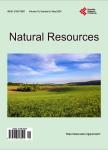Effect of CuI Anode Buffer Layer on the Growth of Polymers Thin Films and on the Performances of Organic Solar Cells
Effect of CuI Anode Buffer Layer on the Growth of Polymers Thin Films and on the Performances of Organic Solar Cells作者机构:Facultad de Química Pontificia Universidad Católica de Chile Santiago Chile Institut des Matériaux Jean Rouxel (IMN) Centre National de la Recherche Scientifique Université de Nantes Nantes France MOLTECH Centre National de la Recherche Scientifique Université de Nantes Nantes France
出 版 物:《Natural Resources》 (自然资源(英文))
年 卷 期:2013年第4卷第1期
页 面:123-133页
主 题:Organic Solar Cells Vacuum Thermal Evaporation Conjugated Polymers Aniline-Heteroaryl Polymers
摘 要:Organic photovoltaic cells using polymer belonging to the aniline-heteroaryl family as electron donor have been achieved by thermal evaporation. We show that the properties of the polymer film, morphology, molecule order and conductivity depend strongly on the bottom anode buffer layer. While cells without anode buffer layer or with MoO3 or CuI anode buffer layer have been probed, we show that CuI allows improving strongly the cells efficiency through an improvement of the morphology and conductivity of the polymer film. This shows that although it is necessary a good band matching at the interface, this is not sufficient, because the templating effect of CuI on the polymer film is primordial for photovoltaic cells improvement.



